Seminar series highlights
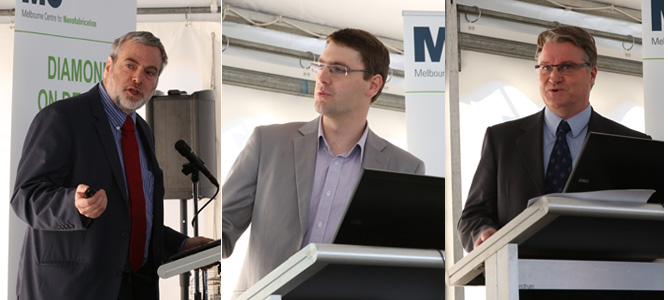

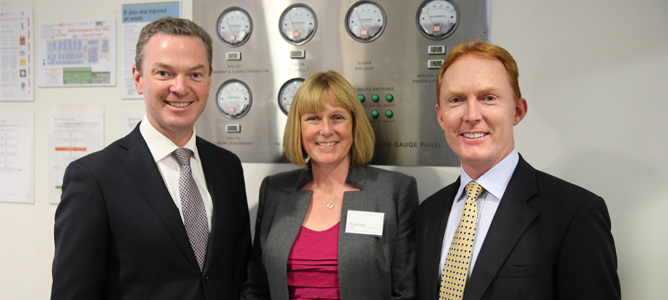

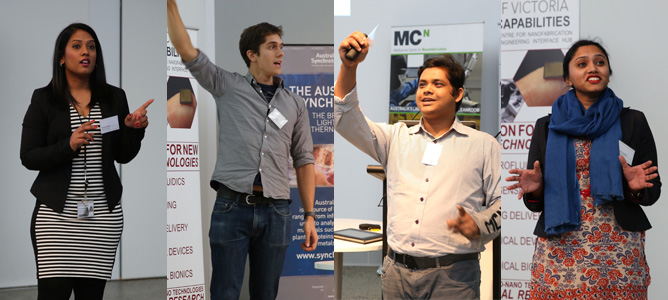
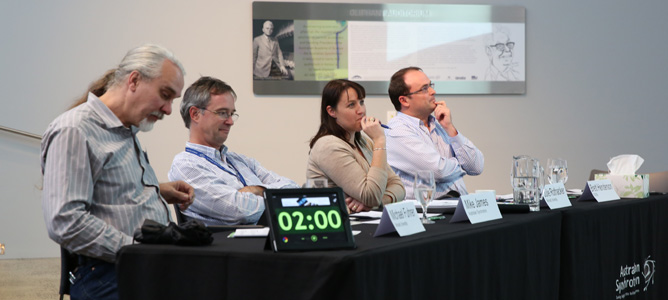
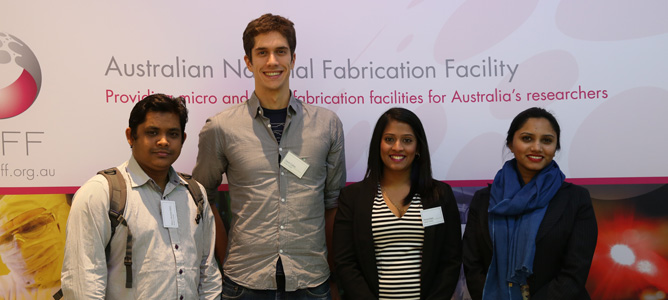
The MCN 2014 Public Seminar Series drew to a close last month with the energetic and fast-paced PhD Frenzy. Many people from the MCN community came together over the course of the series to learn from thought leaders and some of MCN’s most successful clients.
Diamond on demand grand opening
Presenting to a packed marquee, Dr. Alastair Stacey, Professor Steven Prawer and Professor Lloyd Hollenberg provided captivating examples of the real-world applications of synthetic diamond. Giving a brief history of synthetic diamond and its uses in scientific research, Dr Stacey placed MCN’s Diamond Deposition Suite in the broader context of global research, sharing his excitement for what it means to have two state-of-the-art systems available for use in Victoria. Professor Prawer followed this with a summary of the Bionic Eye project and the significance of diamond in the creation of high-acuity devices which can be safely and successfully implanted in the eye. Lastly Professor Hollenberg gave an overview of quantum reality and technology, leading into diamond-based quantum bio-sensing, including the creation of a Nano-MRI for biological systems and the real time imaging of neuronal networks.
Concluding the seminar, Minister Pyne delivered an address highlighting the Federal Government’s commitment to financing crucial scientific infrastructure through the continued funding of the National Collaborative Research Infrastructure Strategy (NCRIS). This funding has now been confirmed with a value of $150 million from July 2015.
Officially launching MCN’s newly commissioned diamond deposition suite, Minister Pyne then participated in a tour of the centre, showing great interest in the work undertaken at the MCN and choosing to gown up and enter the cleanroom for a closer look.
Nanofabulous for industry
Held in May, the Nanofab-ulous for Industry seminar highlighted the exciting work of MCN’s industry clients, much of which has not previously been publicly shared.
Kicking off the morning, Vice President of Research and Development at Vaxxas, Angus Forster highlighted the evolution of the Nanopatch TM, discussing the common pitfalls of start up companies and the steps that Vaxxas are taking to avoid them. Noting MCN’s important role in maximizing the momentum gathered in the early stages of Vaxxas, Angus said that a significant aspect of development from a great concept to a great product is having access to local technology resources. Having access to facilities such as MCN minimizes the time between product concept and demonstrated clinical performance as well as the potential gap between functional product performance and the final manufactured product. Partnership with MCN has allowed Vaxxas to increase both yield and volume of production by transferring the DRIE process from 4 to 6 inch wafers and processing wafers in parallel by using both of MCN’s DRIE systems.
Managing Director of Eden BDM, Alex King discussed the development of the world’s first micro-flow battery for use in electric powered vehicles (EPV). Alex highlighted the breakthrough technology which has enabled design of the battery – Edenglass. Edenglass is a substance comprised of a series of self assembling nanoparticle capacitors which hold and amplify electric charge. Incorporating the Edenglass into a microfluidic design created at MCN, Eden BDM are focused on creating a new style of EPV battery to combat the issues with current devices namely their huge cost, weight, recharge requirements and safety concerns. Eden’s design would see 168 microfluidic chips stacked together to create a battery unit that is able to recapture the expended energy of a moving car, minimizing the need for recharging and allowing the EPV to reach potentially unlimited mileage.
Chairman and Director of MuPharma Pty Ltd, Harry Unger showcased SonoEye TM, the first non-invasive device used to deliver medication to the eye for the treatment of macular degeneration. Currently the only way to deliver treatment to the retina is with a series of monthly injections into the eye which are invasive, painful and hold a series of associated risks. In contrast the SonoEye TM Device is a hand held device that generates an ultrasound to move the chosen drug through a gel placed on the applicator, which when held on the cornea, increases the permeability of the target tissue and moves the drug through to the retina. Through design collaboration with MCN, MuPharma Pty Ltd was able to increase the efficacy of the SonoEye TM and extend its impact for customers.
Director of Research and Development at Innovia Security, Gary Power shared how optically variable devices such as holograms have helped create counterfeit proof banknotes, drivers’ licenses and educational certificates. Having just celebrated 25 years of polymer banknote technology, Innovia Security, in conjunction MCN, have developed a new manufacturing capability for these devices which utilize nanofabrication techniques to write 75GB of data into a one inch square image for the creation of highly detailed, refractive holograms.
Managing Director and founder of Micro-X Pty Ltd, Peter Rowland discussed the development of a lightweight, mobile medical x-ray system for hospitals. Working closely with MCN in its quest for an efficient, miniature, high performance cold-cathode x-ray tube, Micro-X have utilized carbon nanotubes, to create an energy efficient system which is much smaller then typical x-ray systems, enabling easier portability and maneuverability.
The seminar provided an amazing insight into just some of the exciting work that is carried out at MCN and the extensive range of fields for which nanofabrication can be relevant.
PhD Frenzy
Thirteen of MCN’s brightest and most passionate students took to the stage in late June to share their theses and the work they have been undertaking at MCN. The students spoke on a range of topics from the manipulation of microfluidic systems to nano-optics, from MEMS resonators to photonic crystals, highlighting the importance of their work and the methods they are utilising, all in under 2 minutes each.
The panel of judges, comprising Professor Michael Fuhrer, Professor Mike James, Brett Henderson and Julie Rothacker, judged the students on their presentation style and content, asking a further question into the science and commerciality of their work following each presentation.
Taking out the grand prize of the iPad Air in first place, David Collins gave an energetic and witty presentation on the manipulation of microfluidic systems using surface acoustic waves. He highlighted how future sensing devices could be incorporated in household items such as toilets to warn people of illness before symptoms show.
In second place, Romiza Mazid discussed the stability of biomolecules using ionic liquids, passionately describing the importance of this work in the creation of stable vaccine solutions for the third world, in order to remove the necessity for refrigeration and specific storage environments.
Tied in third place, Upulie Divisekera spoke of her mission to cure cancer through the delivery of nanoaprticles across cell membranes through engineered pore forming proteins in order to best deliver drugs to the site of cancer, while Masrur Morshed Nahid gave the audience a glimpse into the future where phones are both flexible and transparent and where laptops can be worn as a wristband. Discussing organic electronics polymer film morphology and device physics, Nahid showcased the science behind the vision for these future devices.
MCN thanks all those who participated in the event and helped to make it such a success.


